Working Time
- Mon-Sat 09:00AM - 09:00PM
Sunday - Closed
Contact Info
-
Phone: 04040101539
9059600930
Childhood Diabetes:
Throughout the world, incidences of diabetes are on the rise, and so is diabetes amongst children. Most children are affected by type 1 diabetes. However, the number of children and young adults affected by type 2 diabetes is beginning to rise.
COMMON: More than 1 million cases per year (India).
Treatment can help, but this condition can't be cured
- Requires a medical diagnosis
- Lab tests or imaging always required
- Chronic: can last for years or be lifelong
- It typically appears in adolescence.
- Symptoms include increased thirst, frequent urination, hunger, fatigue and blurred vision.
- Treatment aims at maintaining normal blood sugar levels through regular monitoring, insulin therapy, diet and exercise.
TYPE - 1 DIABETES
Type 1 diabetes is the most common form of diabetes in children: 90-95% of under 16s with diabetes have this type.
Problems in type 1 diabetes

SYMPTOMS INCLUDE:
- Increased urination
- Increased thirst
- Constant hunger
- Weight loss
- Blurred vision
- Feeling tired all the time
Symptoms that are more typical for children include:
- Tummy Pains
- Headaches
- Behaviour Problems.
What is type 1 Diabetes?
- In type 1 diabetes, a person�s pancreas produces little or no insulin.
- Type 1 Diabetes can develop at any age but most often occurs in children, teens, and young adults.
How is type 1 diabetes diagnosed?
- Your doctor will use blood tests to diagnose diabetes.
- A blood glucose level above 125 mg/dL after fasting overnight or
- Above 200 mg/dL after eating may indicate diabetes.
How is type 1 diabetes treated?
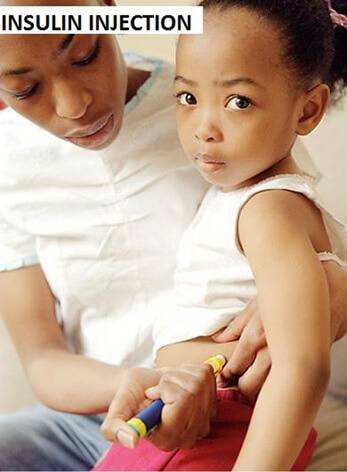
- People with type 1 diabetes must have daily injections of insulin to keep a normal level of glucose in the blood.
- A healthy diet, exercise, and regular monitoring of blood glucose levels are also important to manage diabetes.
Problems if not treated
- When there is not enough insulin, glucose builds up in the blood, putting people at risk for serious health problems including
- Diabetic ketoacidosis
- Heart attacks and strokes
- Kidney problems
- Numbness and tingling in the feet
- Vision problems
- Erectile dysfunction (in men)
TYPE -2 DIABETES IN YOUNG
Problems of type 2 diabetes?
- Increased thirst and urination
- Increased hunger
- Fatigue
- Blurred vision
Which children are at risk for type 2 diabetes?
- Being overweight
- Being physically inactive
- Having a family history of diabetes in a parent or sibling
- Being born to a mother who had gestational diabetes(diabetes during pregnancy)
How is type 2 diabetes in children treated?
- They need to take medication to control blood glucose levels.
- For some children, the disease can be managed with diet and exercise alone
- Insulin and some oral diabetes medications are used to control blood sugars.
Diabetes And Bad Cholesterol(Dyslipidemia)
Dyslipidemia means abnormal levels of fats in blood
The most common types of dyslipidemia are
- High levels of triglycerides (fats in the blood)
- High levels of low-density lipoprotein (LDL or �bad� cholesterol)
- Low levels of high-density lipoprotein (HDL or �good�cholesterol)
Why is dyslipidemia a concern for people with diabetes?
Dyslipidemia further raises the risk of
atherosclerosis in people with diabetes.
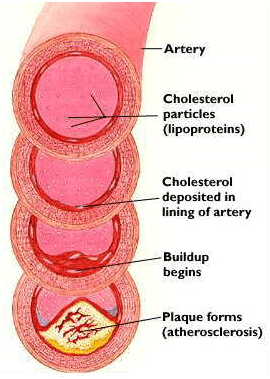
Atherosclerosis ( fat deposits in blood vessel wall) leads to heart disease, poor circulation, and stroke
How will you know if you have dyslipidemia?
Dyslipidemia has no symptoms (what you feel).
Health care providers detect it by a blood test called a lipid profile.
This test measures the amount of cholesterol, triglycerides, and other fats in your blood. People usually have a lipid profile after fasting overnight.
What can you do to improve lipid levels and keep your heart healthy?


You can improve your lipid levels with Medication , a Heart-healthy diet and weight loss, increased physical activity, and good blood pressure and blood glucose control.
Complications of Diabetes
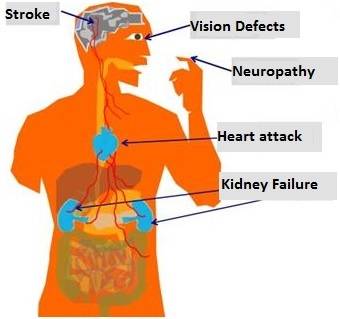
Following are the various complications of diabetes:
DIABETIC KETO ACIDOSIS
Diabetic ketoacidosis (DKA)�is a potentially life-threatening complication in patients with diabetes mellitus.
Problems are nausea and vomiting, pronounced thirst, excessive urine production and abdominal pain that may be
severe. In severe DKA, breathing becomes labored and of a deep, gasping character.
It happens predominantly in those with type 1 diabetes, but it can occur in those with type 2 diabetes under certain circumstances.
DKA results from a shortage of insulin; in response the body switches to burning fatty acids and producing acidic ketone bodies that cause most of the symptoms and complications.
The main aims in the treatment of diabetic ketoacidosis are replacing the lost fluids and electrolytes while suppressing the high blood sugars and ketone production with insulin.
HYPOGLYCEMIA(LOW BLOOD GLUCOSE)
Problems of low blood glucose
- Hunger
- Nervousness and shakiness
- Sweating
- Dizziness
- Sleepiness
- Confusion
- Difficulty speaking
- Feeling anxious or weak
- Loss of consciousness or coma
- Seizure or Convulsions
Respiratory�infections
The immune response is impaired in individuals with diabetes mellitus.The
vascular effects of diabetes also tend to alter lung function, all of which leads to an increase in
susceptibility to respiratory infections such as pneumonia and influenza among individuals with diabetes. We
advice Pneumococcal vaccine to prevent recurrent respiratory infections.
Cardiovascular disease.
Diabetes dramatically increases the risk of various cardiovascular problems,
including coronary artery disease with chest pain (angina), heart attack, stroke and narrowing of arteries
(atherosclerosis). If you have diabetes, you are more likely to have heart disease or stroke.
Nerve damage(Neuropathy)
Excess sugar can injure the walls of the tiny blood vessels (capillaries)
that nourish your nerves, especially in the legs. This can cause tingling, numbness, burning or pain that
usually begins at the tips of the toes or fingers and gradually spreads upward. Left untreated, you could lose
all sense of feeling in the affected limbs.�Damage to the nerves related to digestion can cause problems with
nausea, vomiting, diarrhea or constipation. For men, it may lead to erectile dysfunction.
Kidney damage (nephropathy)
The kidneys contain millions of tiny blood vessel clusters (glomeruli)
that filter waste from your blood. Diabetes can damage this delicate filtering system. Severe damage can lead to
kidney failure or irreversible end-stage kidney disease, which may require dialysis or a kidney transplant.Renal
(kidney) disease �causes swelling (edema) in the feet and legs. As the disease progresses swelling affects all
over the body.
Eye damage (Retinopathy)
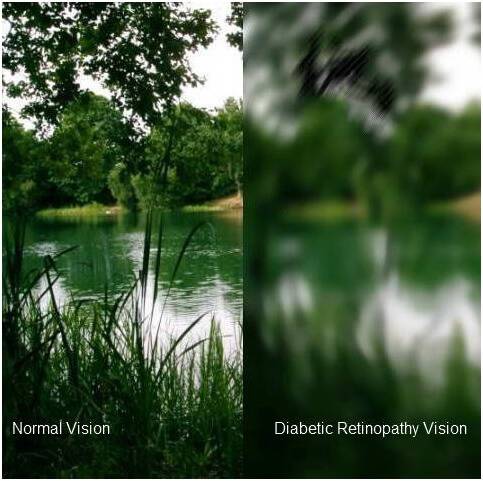
Diabetes can damage the blood vessels of the retina (diabetic retinopathy), potentially leading to blindness.
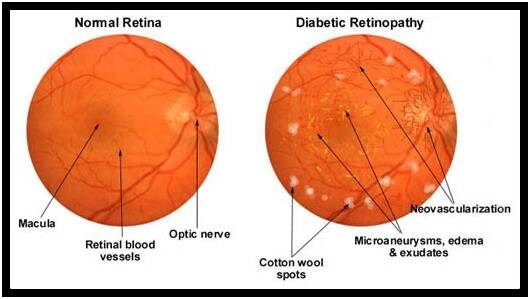
Diabetes also increases the risk of other serious vision conditions, such as cataracts and glaucoma.
Foot Damage
Fig: Left foot little toe is amputated because of gangrene.
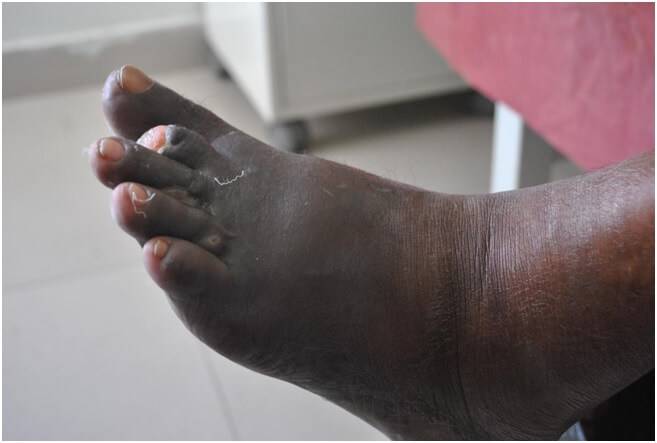
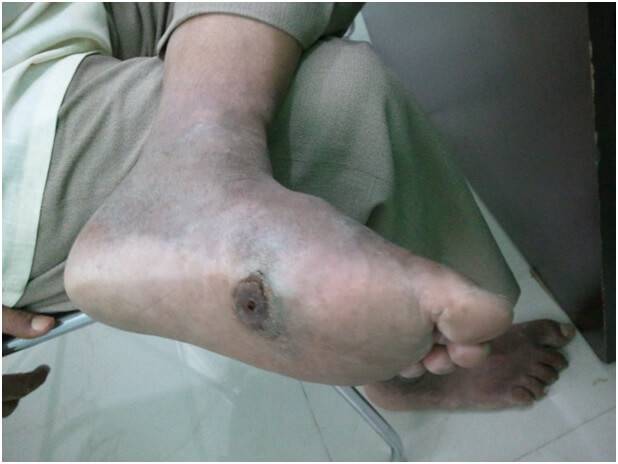 Nerve damage in the feet or poor blood flow to the feet increases the risk of various foot complications.
Left untreated, cuts and blisters can become serious infections. Severe damage might require toe, foot or
even leg amputation.
Nerve damage in the feet or poor blood flow to the feet increases the risk of various foot complications.
Left untreated, cuts and blisters can become serious infections. Severe damage might require toe, foot or
even leg amputation.
Skin and mouth conditions.
Diabetes may leave you more susceptible to skin problems, including bacterial and fungal infections. Gum
infections also may be a concern, especially if you have a history of poor dental hygiene.
Osteoporosis
Osteoporosis is a disorder that causes bones to become weak and prone to fracture. People
who have diabetes have an increased risk of osteoporosis.
Alzhemer's disease
Type 2 diabetes may increase the risk of Alzheimer's disease.
Cancer
People with diabetes have a higher risk of some cancers.
Diabetes and Hypertension
Having diabetes increases your risk of developing high blood pressure .
Hypertension greatly raises your risk of heart attack, stroke and kidney failure, which may lead to death.
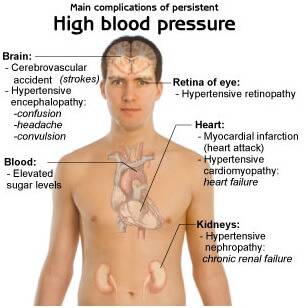
If you have diabetes you should aim to keep your blood pressure well controlled.
How do I know if I have high blood pressure?
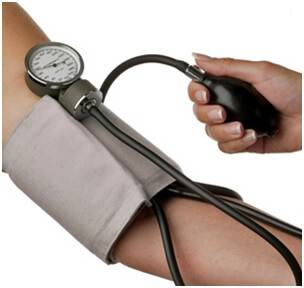
High blood pressure is a silent problem � you won't know you have it unless your health care provider checks your blood pressure.
What Should Blood Pressure Be if You Have Diabetes?

Your blood pressure should not go above 130/80.
How can blood pressure be lowered?
These are ways in which blood pressure can be lowered:
- Modifications to lifestyle (weight loss , exercise, diet control , decreased salt intake , and decreased alcohol intake )
- Medications
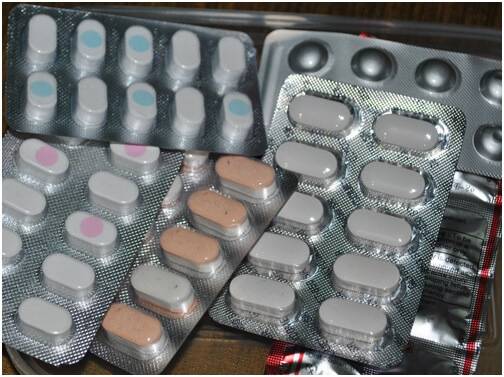

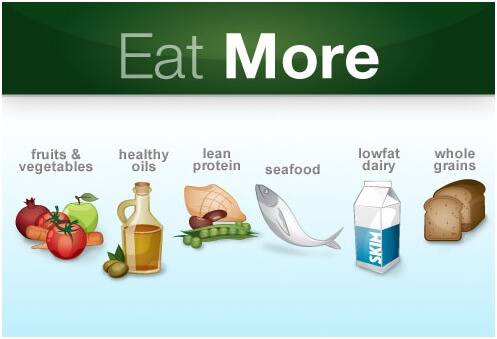

- Modifications to lifestyle (weight loss , exercise, diet control , decreased salt intake , and decreased alcohol intake )
- Medications
Diabetes and Infections
Warning Signs of Infection With Diabetes
- Pain,redness or swelling
- Fever and chills
- Wound or cut that won't heal
- Painful or frequent urination or a constant urge to urinate
- Bloody, cloudy, or foul-smelling urine
- Red, warm, or draining sore
- Sore throat, scratchy throat, or pain when swallowing
- Sinus drainage, nasal congestion, headaches
- Persistent dry or moist cough that lasts more than two days
- White patches in your mouth or on your tongue
- Nausea, vomiting, or diarrhea
- Flu-like symptoms (chills, aches, headache, or fatigue)
- Vaginal itching
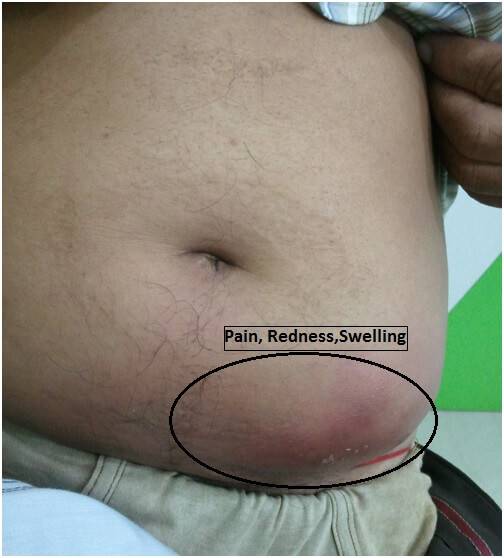
Why Are Infections Risky for People With Diabetes?
Diabetes can slow down your body's ability to
fight infection. High blood sugar (glucose) leads to high levels of sugar in your body's tissues, allowing
bacteria to grow and infections to develop more quickly.
People with diabetes are more adversely affected
when they get an infection than someone without the disease, because diabetics have weakened immune defenses
What Kinds of Infections Are Diabetics Most Likely to Get?
Common sites of infection are your bladder,
kidneys, vagina, gums, feet, and skin.
Diagnosing and Treating Infections
A health care provider may perform one or more tests to diagnose
infection, including blood tests, microscopic examination of secretions, urine dipstick tests, x-rays and
physical examination.
Healthcare providers may prescribe oral or topical antibiotics to treat some
infections. Careful blood sugar control is important during any infection to promote healing and prevent further
complications related to the infection.
Diabetes and kidney (Nephropathy)
Diabetes is the most common cause of kidney failure
Diabetic nephropathy is damage to both kidneys caused by
diabetes
A frequent complication of diabetes is high blood pressure(hypertension). Constant high blood
pressure also leads to gradual kidney damage and adds to the effects of diabetes
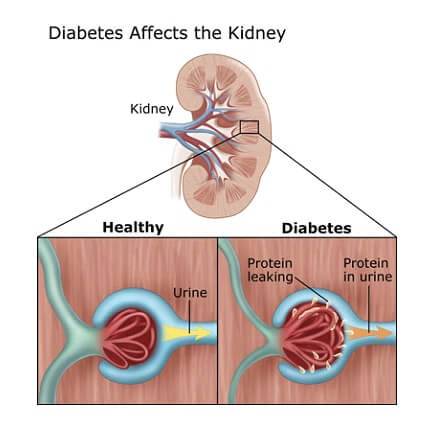
Problems of kidney disease in diabetes
Throughout its early course, diabetic nephropathy has no
symptoms
They develop in late stages like :
- edema: swelling, usually around the eyes in the mornings; later, general body swelling may result, such as swelling of the legs
- weakness and fatigue and anemia
- foamy appearance or excessive frothing of the urine (caused by the proteinuria)
- weight gain (from fluid accumulation)
- anorexia (poor appetite)
- nausea and vomiting
- malaise (general ill feeling)
- headache
- frequent hiccups
How is kidney disease diagnosed?
Kidney damage is diagnosed with urine and blood tests.
The earliest sign of kidney problems in people with diabetes is the presence of small amounts of protein in the urine.
If not treated ,this condition leads to more protein in the urine, then to gradual loss of kidney function.
Several blood tests can test the kidney�s ability to filter and detoxify (clean) the blood.� These include creatinine and blood urea nitrogen (BUN) tests.
How do you protect your kidneys?

Important treatments for kidney disease are tight control of blood glucose and blood pressure. Once kidneys fail, dialysis is necessary or to get a kidney transplant.
Diabetes and Insulin
How is diabetes treated?
Treatment depends on the type of diabetes you have. There are two main types
of diabetes:
- Type 1 occurs when the pancreas stops making insulin. It is usually seen in children and teens, but may occur later in life. People with type 1 diabetes always need insulin .
- Type 2 is the most common type of diabetes. With type 2 diabetes, the body does not produce enough insulin and it becomes resistant to insulin�s effects. It occurs in adults and elderly patients, many of whom are overweight. Younger people can also develop type 2 diabetes Treatment includes changes in lifestyle (diet and exercise), plus medicine : oral medicines (pills), insulin, and/or other injected medicines. People with type 2 diabetes usually need treatment with oral medicines for several or even many years, but may eventually need insulin to maintain glucose control.
What are the different types of insulin?
Different types of insulin are classified by how fast they
work and�how long they continue to work in the body.
- Mealtime (or �bolus�) insulin. Used before meals to control the�rise of blood glucose levels after eating.
- Rapid-acting: lispro, aspart, glulisine
- Short-acting: regular human insulin
- Basal insulin :Controls blood glucose levels between meals and�throughout the night. This is usually used
once or twice daily. It�can be used alone or in combination with oral medicines or rapid acting�insulin.
- Intermediate-acting: human NPH
- Long-acting: glargine and detemir
- Pre-mixed insulin. Combination of bolus and basal insulins that�controls blood glucose levels after and between meals. These are�usually used twice daily before breakfast and dinner. They can be�used alone or in combination with oral medicines.
The type of insulin your doctor prescribes will depend on the�type of diabetes you have, your lifestyle (when and what you eat,how much you exercise), your age, and your body�s response to�insulin.
It also depends on how often you are able or willing to�check your blood glucose and give yourself injections.
People with type 1 diabetes often need more than one type of�insulin. Most people with type 2 diabetes who use insulin just use basal (long-acting) insulin.
What are insulin analogs?
In recent years, scientists have developed new products called�insulin
analogs. These have been genetically engineered to better match the insulin produced by your pancreas.�Insulin
analogs make it easier to control blood glucose.By�controlling and preventing hyperglycemia (high blood
glucose)�and hypoglycemia (low blood glucose), they may reduce the riskof diabetic health problems and improve
your quality of life.Insulin analogs�include long-acting, basal insulins (glargine and determir) and rapid
acting, bolus insulins (lispro, aspart, and glulisine).
How is insulin injected ?
Like traditional insulins, insulin analogs are injected with a�syringe, an
insulin pen, or an insulin pump.
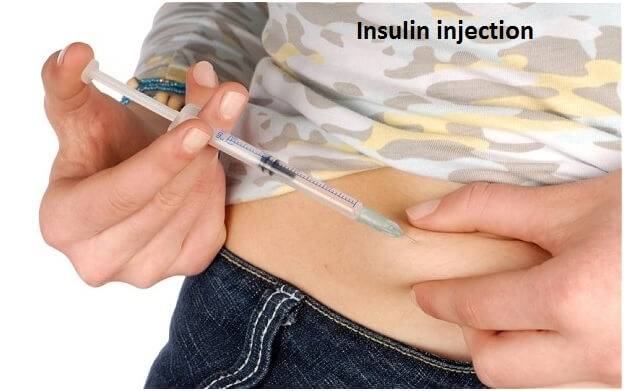
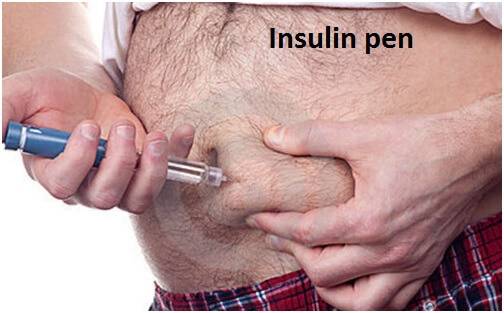
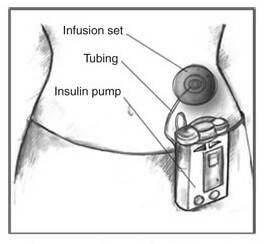
Diabetes And Neuropathy
What are the problems of diabetic neuropathy?s
- Pain, tingling, and burning feet
- Numbness and loss of feeling
- Muscle weakness
- Skin ulcers (open sores)
What is diabetic neuropathy ?
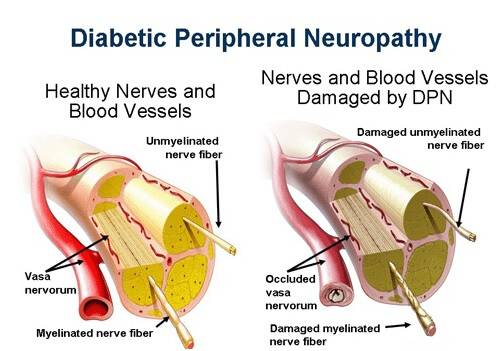
Diabetic neuropathy is nerve damage from high blood glucose (sugar) levels in people with diabetes. Nerves throughout the body can suffer damage. People with poor glucose control and who have had diabetes for a long time are at highest risk for nerve damage
The second type (called Autonomic neuropathy) affects your urinary tract, digestive system, sex organs, sweat glands, eyes, and heart and leads to
- Bladder problems (loss of bladder control, not being able to fully empty the bladder, frequent urinary tract infections)
- Digestive system problems (bloating, nausea, vomiting, diarrhea, constipation
- Erectile dysfunction in men and sexual problems in women
- Too much or too little sweating
- Dizziness when you stand up
How can you prevent problems from diabetic neuropathy?
The best way to prevent nerve damage is to keep
your blood glucose level under good control. You can do so by eating a healthy diet, exercising regularly, and
reaching a healthy weight and medications.
Diabetes and Stroke
What are the warning signs of a stroke?
Typical warning signs of a stroke develop suddenly and can
include:
- Weakness or numbness on one side of your body
- Sudden confusion or trouble understanding
- Trouble talking
- Dizziness, loss of balance, or trouble walking
- Trouble seeing out of one or both eyes
- Double vision
- Severe headache
What is a stroke?
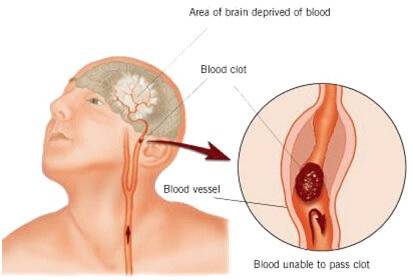
A stroke, sometimes called a "brain attack", occurs when blood supply to part of your brain is interrupted and brain tissue is damaged. The most common cause is a blocked blood vessel. Stroke can cause physical problems such as paralysis, problems with thinking or speaking, and emotional problems.
What does diabetes have to do with strokes?
If you have diabetes, you're much more likely to have
a stroke, heart disease, or a heart attack.
How Can Stroke Be Prevented in Diabetes?
Ways to reduce your risk of stroke include:
- Keep your blood sugar levels controlled.
- Maintain a healthy weight.
- Exercise regularly.
- Have your cholesterol checked and controlled .
- Limit the amount of alcohol you drink. Guidelines are one drink per day for women and two drinks a day for men.
- Have your blood pressure checked and control your blood pressure, if necessary.
- Follow your health care provider's instructions for changing your diet.
- Follow your health care provider's instructions for taking preventive medicines.
How do I know whether I'm at high risk for a stroke?
Just having diabetes puts you at risk, but
your risk is even greater under the following conditions:
- High blood pressure
- Abnormal blood cholesterol levels
- Smoking
- History of stroke or a transient ischemic attack (TIA), also called a mini-stroke
- Family history of stroke or TIAs
How is a stroke diagnosed?
A number of tests may be done if a stroke is suspected:
Your doctor will examine you to check for any changes in body function.� A CT (CAT scan) or MRI (magnetic resonance imaging).
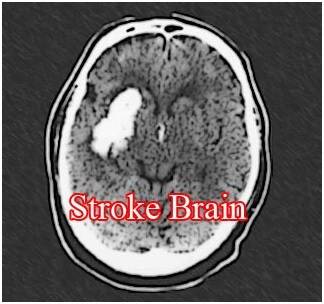
What are the treatments for stroke?
- Rush the patient to 'STROKE UNIT' within 2 hours.
- "Clot-busting" drugs
- Physiotherapy and Rehabilitation
Diabetic Keto Acidosis
Problems of Diabetic ketoacidosis
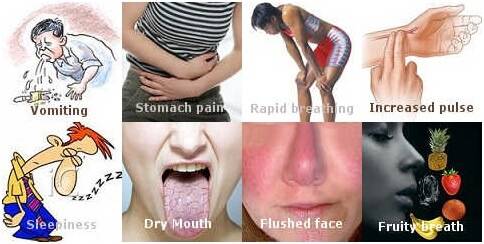
- Too much thirst
- Urinate frequently
- Nausea and vomiting
- Pain in the abdomen
- Severe Weakness
- Confusion and Coma
- Drowsiness
- Shortness of breath
- low pulse and blood pressure
- Fruity-scented breath
What is diabetic ketoacidosis (DKA)?
Diabetic Ketoacidosis is a condition in which the body cells are
unable to get glucose for energy due to low or no insulin.
Thus, body starts to breakdown of the fat for energy produces toxic acid called ketones.
How is DKA diagnosed?
Laboratory tests, including blood and urine tests for ketones .
How is DKA treated?
Diabetic ketoacidosis must be treated in the hospital. Treatment involves giving
insulin and fluids through a vein and closely watching certain chemicals (electrolytes) and blood glucose
Who is at risk for DKA?
If you have type 1 diabetes, you are at risk for DKA if
- You do not take insulin,
- You have a severe infection or other illness,
- you become severely dehydrated.
How to prevent Diabetic Ketoacidosis ?
Taking even minimal Insulin regularly can prevent DKA
development.
- Commitment to diabetes care - smart eating, physically active, and diabetes medications or insulin as directed.
- Monitor blood-glucose level - Careful monitoring is most to make sure that the blood- sugar level remains within target range.
- Insulin regimen - Adjust insulin dosage as needed, which is depending on the blood- glucose level, food you eat, an amount of physical activity, depending on illness , or stress
Diabetes In The Young
Problems of type 2 diabetes?
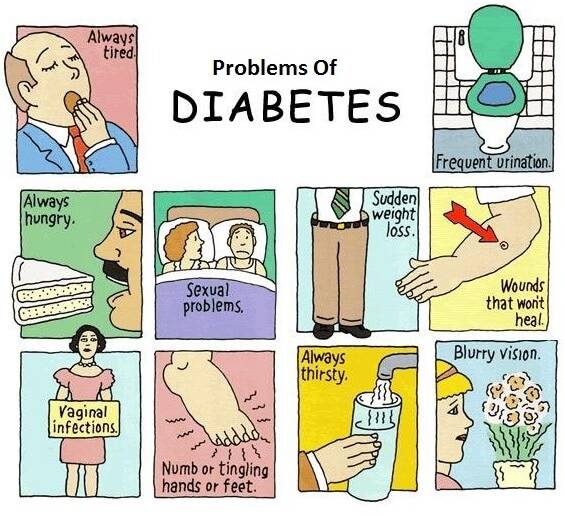
- Increased thirst and urination
- Increased hunger
- Fatigue
- Blurred vision
Who are at risk for type 2 diabetes?
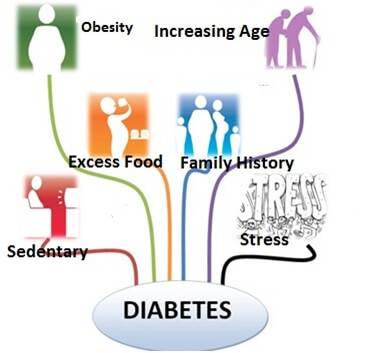
- Being overweight
- Being physically inactive
- Having a family history of diabetes in a parent or sibling
- Being born to a mother who had gestational diabetes(diabetes during pregnancy)
How is type2 diabetes diagnosed ?
Your doctor will use�blood tests�to diagnose diabetes.
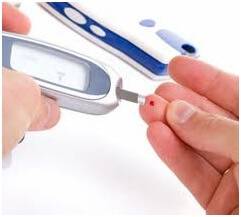
A blood glucose level above 125 mg/dL after fasting overnight or�above 200 mg/dL after eating may indicate diabetes.
How is �diabetes in the young treated?
They �need to take medication to control blood glucose levels.
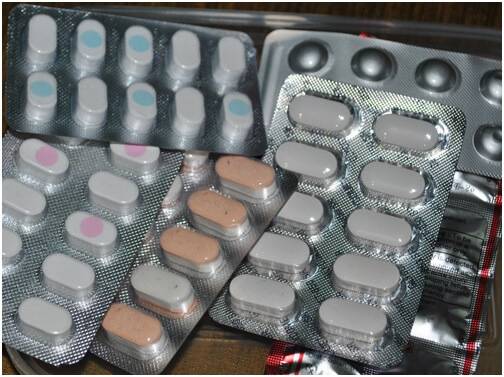
For some , the disease can be managed with diet and exercise alone .Nutrition counseling needs to be available in school so that children understand the importance of healthy eating. Schools have to focus on increasing children�s physical activity and improving their nutrition
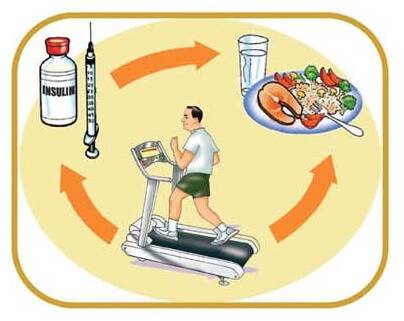
Insulin and some oral diabetes medications are used to control blood sugars and prevent complications of diabetes.
Exercise For Diabetes
Exercise is very important in managing diabetes. Combining diet, exercise, and medicine can help control your blood sugar levels

Why is exercise important for people with diabetes?
When you exercise �your muscles use glucose for
energy. This�reduces the amount of glucose in your blood. Exercise also makes body more sensitive to insulin
(insulin can do a better job of controlling Blood Sugars)
?Benefits of Exercise for People with Diabetes
- Lowers blood glucose, blood pressure, and cholesterol
- Improves circulation
- Reduces the need for insulin and oral medications
- Prevents weight gain and promotes weight loss
- Strengthens the heart, muscles, and bones
- Improves strength, flexibility, and endurance
- Improves brain function and mood
- Lowers stress
What are Guidelines for Exercise in Diabetics ?
The following guidelines can help you increase your
activity level safely.
Screening
Before you begin an exercise, Doctor�will screen �your heart,eyes, kidneys, feet, and
nervous system to make sure you are healthy enough for physical activity.
Type and Duration of Activity
Exercise at least 4 to 5 times per week for about 30 minutes each
session. Ideally, you should exercise every day.A good exercise program should include a 5- to 10-minute warm-up
and at least 15 to 30 minutes of continuous aerobic exercise that makes your heart beat 70 % above your Resting
Heart Rate followed by a 5-minute cool down.
Add muscle strengthening or resistance exercises to your routine 2 or 3 times a week. Wear good shoes and practice proper foot care.
Drink water before, during, and after exercise to prevent dehydration. Check your Blood Glucose before and after exercise and titrate Insulin Dose/Medication accordingly. Always carry a fast-acting carbohydrate food such as glucose when exercising in the event blood sugar drops too low and hypoglycemia symptoms develop during exercise.
You need to choose activities that fit your physical condition, lifestyle. Choose a type of exercise that you enjoy so that you are�more likely to stick with it. Many people with diabetes, find that easy with low-impact activities such as walking and swimming
Eye Disease in Diabetes
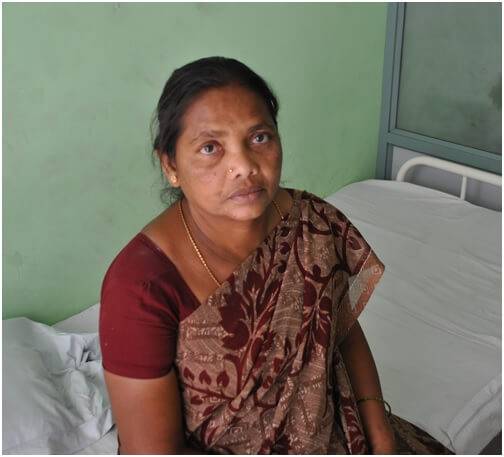
Fig:This 42 year old female LOST her BOTH EYES VISION due to several years of high blood sugars (uncontrolled).
PROBLEMS OF EYE DISEASE IN DIABETES

- Black spots in your vision.
- Flashes of light.
- "Holes" in your vision.
- Blurred vision.
What is diabetic eye disease?
Diabetic eye disease may include:
- Diabetic retinopathy�damage to the blood vessels in the retina.
- Cataract�clouding of the eye's lens. Cataracts develop at an earlier age in people with diabetes.
- Glaucoma�increase in fluid pressure inside the eye that leads to optic nerve damage and loss of vision. A person with diabetes is nearly twice as likely to get glaucoma as other adults.

Who is at risk for diabetic retinopathy?
All people with diabetes�both type 1 and type 2�are at risk.
High blood sugar (glucose) increases the risk of eye problems from diabetes. In fact, diabetes is the leading
cause of blindness in adults age 20 to 74. During pregnancy, diabetic retinopathy may be a problem for �women
with diabetes.
How to treat eye disease in diabetes
- CATARACT - During cataract surgery, the cloudy lens is removed or cleaned out and replaced by a clear man-made lens.
- GLAUCOMA - Treatment of this eye problem in diabetes can include special eye drops, laser procedures, medicine, or surgery. Surgery and laser treatments are directed at improving the eye's aqueous drainage.
- DIABETIC RETINOPATHY - Treatment of diabetic retinopathy may involve laser procedures or surgery.
Eye care for people with Diabetes
All people with diabetes should take precautions to help reduce
their risk of developing eye problems.
Here are some eye care tips:
- Schedule regular appointments with your eye doctor so that any eye problem can be detected early and treated.Everyone with diabetes should get a comprehensive dilated eye exam at least once a year.
- Maintain control of your blood glucose levels.
- Keep your blood pressure under control. High blood pressure by itself can lead to eye disease, so if you have high blood pressure as well as diabetes, it is especially important that you take steps to control both conditions.
- Get your blood cholesterol levels under control.
- Eat a healthy diet.
- Avoid smoking.
- Exercise regularly.
PreDiabetes
Prediabetes is a condition in which blood glucose levels are higher than normal but not high enough for a diagnosis of diabetes.
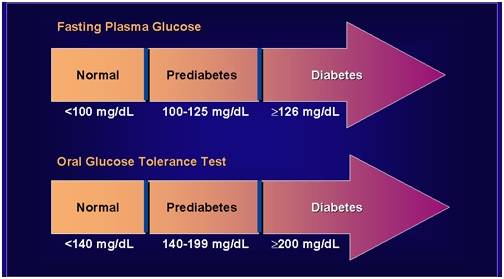
Who is at risk of developing prediabetes
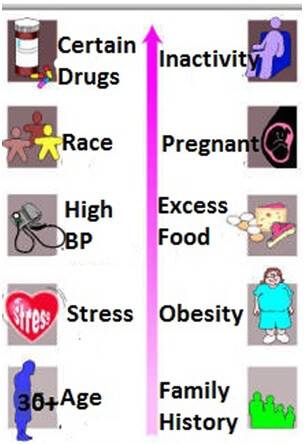
How do you know if you have prediabetes?
Prediabetes has no visible signs or obvious symptoms.
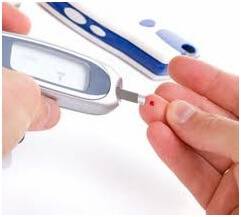
- Fasting blood glucose test (FBG 100 - 125 mg/dl )
- Oral glucose tolerance test (OGT �140 - 200 mg/dl )
- Hemoglobin A1c (HbA1c � 5.8 �- �6.5 % )
Why should you take prediabetes seriously?
Each year about 1 out of 10 people with prediabetes
develops type 2 diabetes.� If left untreated, diabetes can cause blindness, kidney failure, nerve damage, heart
disease, and stroke.
How do you prevent and treat prediabetes?
Most people with prediabetes can avoid progressing to
diabetes with lifestyle changes that include :
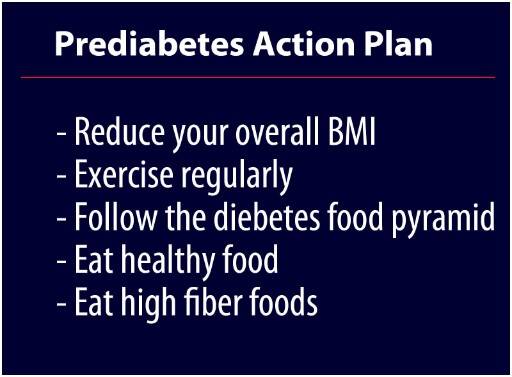
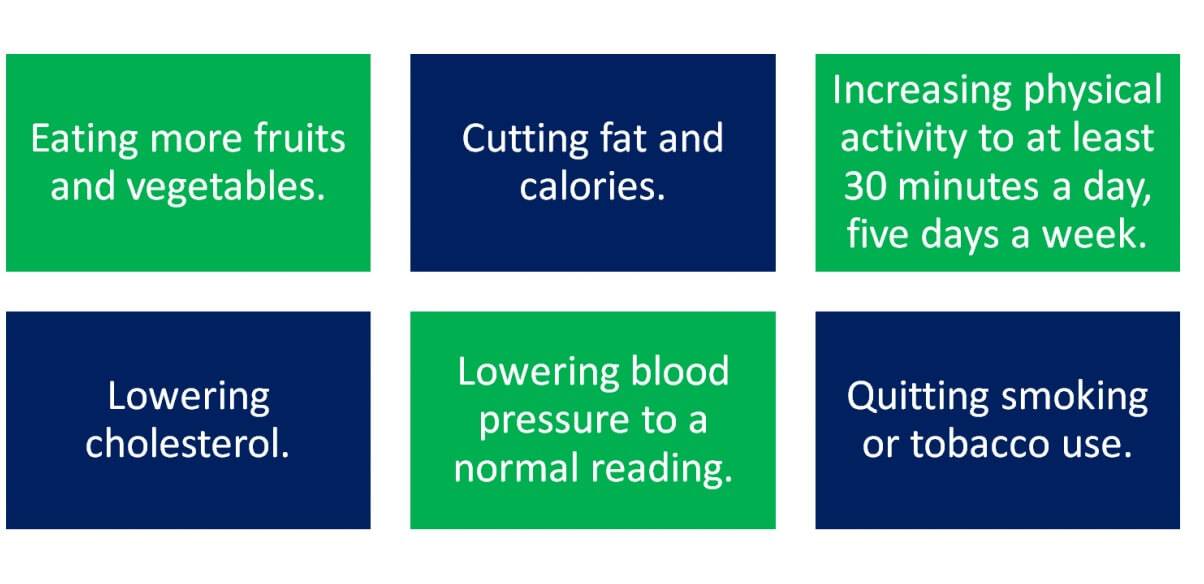
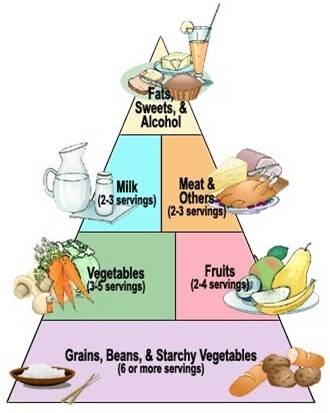
Pregnancy and Diabetess

How do you know if you have gestational diabetes?
All pregnant women should be tested for Blood
Glucose at the time of Conception,and between the 24th and 28th weeks of pregnancy.� The test is called oral
glucose tolerance test (OGTT) and involves measuring blood glucose levels both before and after drinking a
sugary liquid.
Problems of diabetes in pregnancy
- Increased thirst and urination
- Fatigue (feeling tired all the time)
- Blurred vision
- Infections of the bladder, vagina, or skin
Can gestational diabetes be dangerous?
High blood glucose can affect mother �and baby.
- In mother, it increases the risk of premature delivery and preeclampsia, or pregnancy- induced high blood pressure.
- It can cause the baby to grow too large.
- Very large babies may get stuck in the birth canal and have birth injuries.
- Large size also increases the chances of needing a cesarean delivery.
- High blood glucose in the mother may be a cause of stillbirth.
- Uncontrolled gestational diabetes also increases the risk of jaundice and breathing problems in the newborn.
How is gestational diabetes treated?
You may need treatment with Insulin. Eating a �well-balanced diet
and regular exercise are important in preventing and treating gestational diabetes.br

Type-1 Diabetes
Problems in type 1 diabetes

- Weight loss
- Blurred vision
- Increased thirst
- Increased urination
- Constant hunger ,
- feeling tired all the time
What is �type 1 diabetes ?
In type 1 diabetes, a person�s pancreas produces little or no insulin .
Type 1 diabetes can develop at any age but most often occurs in children, teens, and young adults. �In most
people with type 1 diabetes, the body's own immune system (which normally fights harmful bacteria and
viruses) mistakenly destroys the insulin-producing (islet) cells in the pancreas. Genetics may play a role in
this process, and exposure to certain viruses may trigger the disease.
How is type 1 diabetes diagnosed ?
Your doctor will use�blood tests�to diagnose diabetes.

A blood glucose level above 125 mg/dL after fasting overnight or� �above 200 mg/dL after eating may indicate diabetes.
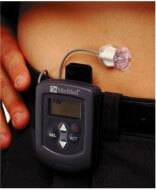
Continuous glucose monitoring, also called CGM, is a new�way for people with diabetes to monitor glucose levels.�The continuous glucose monitor is not intended for day-to-day monitoring or long-term self-care, and it is not a replacement for standard blood sugar monitoring. It is only intended for use to discover trends in blood sugar levels. This helps your health care team make the most appropriate decisions regarding your treatment plan. The main advantage of continuous glucose monitoring is that it can help identify fluctuations and trends that would otherwise go unnoticed with standard HbA1c tests and intermittent finger stick measurements.
How is type 1 diabetes treated?
People with type 1 diabetes must have�daily injections of insulin�to
keep a normal level of glucose in the blood.
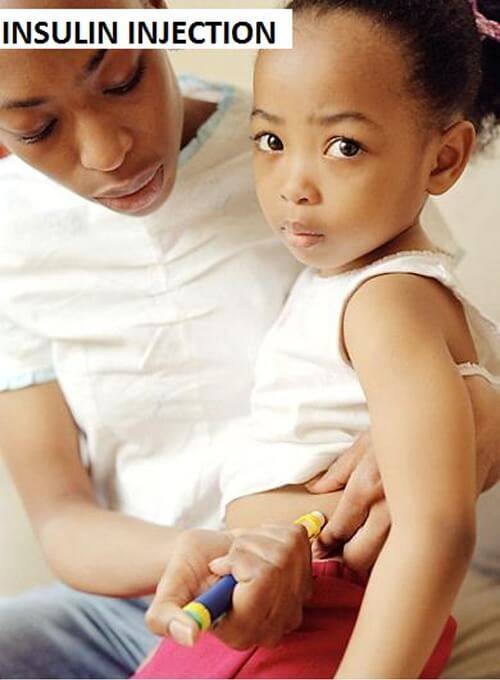
A healthy diet, exercise, and regular monitoring of blood glucose levels are also important to manage diabetes.
Problems if not treated
When there is not enough insulin, glucose builds up in the blood, putting
people at risk for serious health problems including
- Diabetic keto acidosis (life threatening)
- Heart attacks and�strokes(life threatening)
- Kidney problems
- Numbness and tingling in the feet
- Vision problems
- Erectile dysfunction (in men)
Type-2 diabetess

- Increased thirst
- Increased hunger (especially after eating)
- Nausea and occasionally vomiting
- Dry mouth
- Frequent urination
- Fatigue (weak, tired feeling)
- Blurred vision
- Numbness or tingling of the hands or feet
- Frequent infections of the skin, urinary tract or vagina
What is type 2 diabetes?
In type 2 diabetes pancreas does not produce enough insulin or the body
cannot use the insulin adequately. This is called insulin resistance. When there isn't enough insulin or the
insulin is not used as it should be, glucose (sugar) can't get into the body's cells for usage as fuel .
Glucose builds up in the blood instead of going into cells.
Who gets type2 diabetes ?

- Anyone can get type 2 diabetes. However, those at highest risk for the disease are those who
- Are over 45
- Are obese or overweight
- Have had gestational diabetes
- Have family members who have type 2 diabetes
- Have prediabetes
- Are inactive
- Have low HDL cholesterol or high triglycerides levels
- Have high blood pressure
- Are members of certain racial or ethnic groups
How is type 2 diabetes diagnosed ?
Your doctor will use�blood tests�to diagnose diabetes. �A blood
glucose level above 125 mg/dL after fasting overnight or� �above 200 mg/dL after eating may indicate diabetes.
How is type 2 diabetes treated ?
- Life style modifications ( weight loss, diet and exercise )
- Oral diabetes medications
- Insulin injections

His smile says how confident he is in managing his Blood Sugars following our Guidelines.
Problems if not treated
When there is not enough insulin, glucose builds up in the blood, putting
people at risk for serious health problems including
- Heart attacks and�strokes
- Kidney Problems
- Numbness in the feet�and sores that don�t heal
- Vision problems
- Erectile dysfunction (in men)
 NABH ACCREDITED
NABH ACCREDITED


